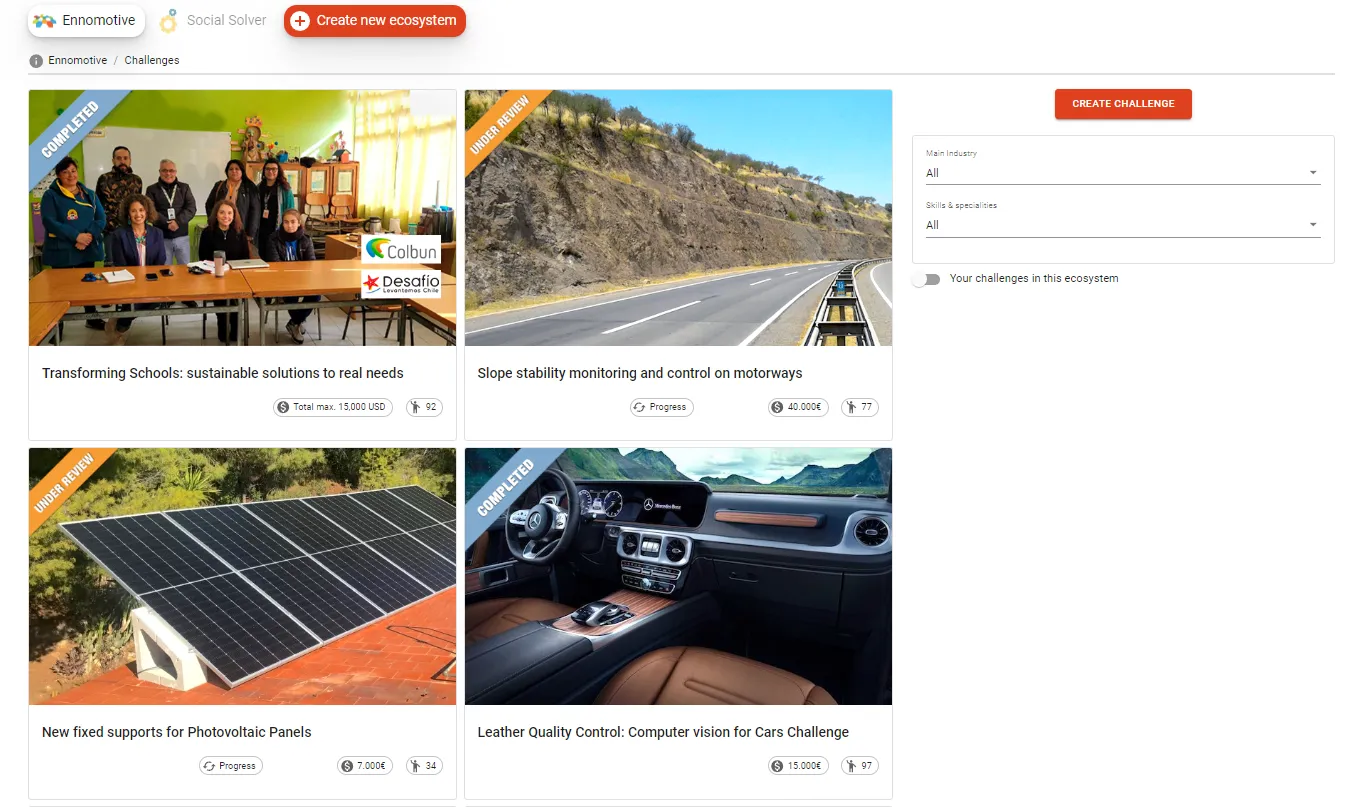Background
Since the introduction of steel in the construction sector as a structural material, the number of types of structures has grown exponentially, and so has their complexity and quality control requirements.
The building of metallic structures requires both preparations in the factory (sheeting, cutting, welding, etc.) and on-site (positioning, anchoring, etc.). Although factories have the required resources, sometimes the assembly of structures takes place in remote locations where technical and human resources are very limited. This may endanger the correct assembly and quality of the structure.
The challenge
The building of the metallic structure requires the correct control of the different required steps for the installation of every profile or part:
- On-site geolocation of the exact spot to carry out the foundation or connection with other steel profiles. It must include the relative height of the site.
- Scanning the bar code of every single part. Bar codes are added previously in the factory to ensure the correct installation according to the construction plan.
- Monitoring the right placement of each profile, once installed, especially the abutment head, to control a potential plumbing or twist of the steel profiles.
Monitoring these variables would improve the on-site execution through effective quality control while reducing rework.
What the client is looking for
The main goal of this challenge is to find a drone-operated solution that makes steel profile installation easier, reduces execution errors, controls the quality of the structures, and cuts execution costs.
The said solution must carry out all or some of the following operations:
- To geolocate the foundation and installation spots (± 2cm).
- To laser mark these spots on the ground. (± 2cm)
- To geolocate the abutment heads of the steel profiles (± 2cm)
- To indicate the plumb or twist of the steel profile (± 0.5º).
See annex 1 for tolerances.
- To scan bar codes (the smallest ones are 32mm x 5mm) on metallic profiles located in difficult aerial-access areas.
- To store and deliver all collected data in a legible format for its analysis.
- To analyze the collected data, tolerance compliance, 3D map… (nice-to-have)
Challenge participants may find inspiration in commercial models (drones, cameras, SW, etc.), but the focus will be on the solver or startup’s ability to create a prototype that includes data-and-image capturing, software to process them, and the delivery of ready-to-analyze data.
It will necessary to use geolocation technologies, lidar, image processing, artificial intelligence, etc.
Please, find more information in annex 1 - Measurements and tolerances.
Evaluation Criteria
The solutions will be evaluated according to the following criteria. In order of importance:
- Higher robustness of the solution and technical viability.
- The lower percentage of errors
- The higher degree of automation
- Possibility to be used remotely and off-line
- Best Business Case: initial investment (CAPEX) + operational cost (OPEX))
Deliverables
This is a 2-round challenge with the following deliverables:
Round 1
A PDF including the following:
Brief description of the proposed solution, including a short specification of the equipment, materials, functioning scheme…
- Images, videos, 3D models, screenshots…
- Feasibility evidence
- Estimated investment and operational costs. Include the investment in equipment, the number of workers, operating time (estimation), and/or cost for the service.
Please, send a structured description of your solution, avoid long texts, and include an index and lists. Also, you can support your solution with images and sketches or diagrams.
Round 2
An on-site test that includes the following:
- A data-capturing drone for all or some of the operations.
- Data-capturing-and-processing software that incorporates them into a document for its technical analysis.
Timeline
1st round – 6 weeks + 3 weeks for evaluation
2nd round – 8 weeks + 3 weeks for evaluation



